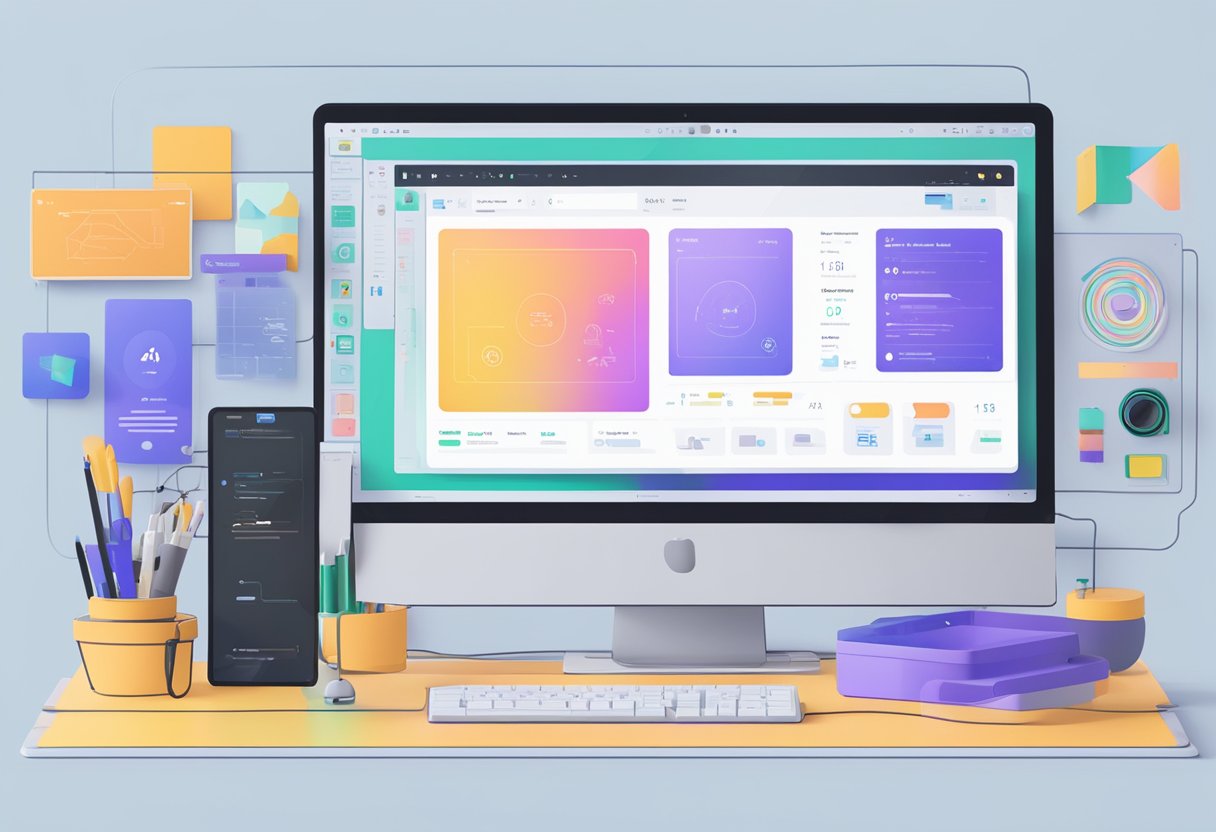How to undo in Figma? A relatively easy step that often leaves many users baffled. Undoing changes in Figma is a straightforward process. Whether you are working on a small or large project, you can quickly undo any changes you make. Figma has a built-in undo button that allows you to undo any changes you have made with the click of a button. You can also use the keyboard shortcut "Ctrl + Z" on Windows or "Cmd + Z" on Mac to undo your last action.
Designers must know how to undo changes in Figma. It is a crucial feature that can save a lot of time and effort. Whether you accidentally delete an object or change the wrong color, you can quickly undo the changes and get back to work. Knowing how to undo changes in Figma is an essential skill that all designers should have.

Understanding Undo in Figma
What is Undo?
Undo is a feature in Figma that allows designers to reverse the changes they have made to their designs. It is a crucial tool for designers who want to experiment with different design options without worrying about losing their progress. Undo allows designers to make changes to their designs without the fear of making irreversible mistakes.
Why is Undo Important?
Undo is important because it allows designers to experiment with different design options without worrying about losing their progress. It also allows designers to make changes to their designs without the fear of making irreversible mistakes. Undo is also essential because it helps designers to save time by allowing them to reverse changes that they do not like quickly.
How Does Undo Work in Figma?
Undo in Figma can be performed in multiple ways. The most common way to undo in Figma is by using the keyboard shortcut "Ctrl + Z" on Windows or "Command + Z" on Mac. This will undo the last action performed by the designer.
There is also an Undo button in Figma that can be used to undo changes. The Undo button is located in the toolbar and can be accessed by clicking on it. The Undo button allows designers to undo multiple changes at once.
Designers can also use keyboard shortcuts to undo changes in Figma. These keyboard shortcuts can be customized in the Figma settings. Designers can use keyboard shortcuts to undo a single or multiple changes simultaneously.
In conclusion, Undo is a crucial tool for designers who want to experiment with different design options without worrying about losing their progress. It is important for designers to understand how Undo works in Figma and how to use it effectively. By using Undo, designers can save time and confidently make changes to their designs.
How to Undo in Figma
Undoing actions are a crucial feature in any design software, and Figma is no exception. Here are some ways to undo actions in Figma:
Using the Keyboard Shortcut
One of the quickest ways to undo an action in Figma is by using the keyboard shortcut "Ctrl + Z" (or "Cmd + Z" on Mac). This shortcut will undo the last action you took, whether it was deleting a shape or moving an object. It's a simple and effective way to undo actions quickly without having to navigate through menus or buttons.
Using the Undo Button
The Undo button is another way to undo actions in Figma. It's located in the top-left corner of the screen and has an arrow pointing to the left. Clicking this button will undo your last action, just like the keyboard shortcut. This button is especially useful if you accidentally deleted something and want to undo that action quickly.
Undoing Multiple Actions
Sometimes, you may need to undo multiple actions in Figma. To do this, you can use the "Undo History" feature. This feature allows you to view the history of your actions and undo any of them. To access the Undo History, click on the "Edit" menu in the top-left corner of the screen and select "Undo History." From there, you can select the action you want to undo and click on it.
Undoing Accidentally Deleted Components
Accidentally deleting a component can be frustrating, but it's easy to undo in Figma. First, select the artboard where the component was located. Then, click on the "Edit" menu in the top-left corner of the screen and select "Undo Delete." This will bring the component back to the artboard.
In conclusion, undoing actions in Figma is a simple and essential feature for any designer. Whether you use the keyboard shortcut, the Undo button, or the Undo History feature, knowing how to undo actions quickly and efficiently is essential.
Redoing in Figma
Redoing an action in Figma is just as easy as undoing it. Whether you need to redo a single action or multiple actions, Figma has got you covered. This section will explore the different ways to redo in Figma.
Using the Keyboard Shortcut
The keyboard shortcut to redo in Figma is Shift + Cmd/Ctrl + Z. This shortcut works for both Mac and Windows users. Simply press the keys simultaneously, and the last undone action will be redone.
Using the Redo Button
The Redo button is located next to the Undo button in the top bar of the Figma tool. To redo an action, click on the Redo button. The last undone action will be redone.
Redoing Multiple Actions
Figma allows you to redo multiple actions at once. To do this, you need to access the version history of your file. Click on the hamburger menu in the top left corner of your screen and select "Version History."
In the version history, you will see a list of all the versions of your file. Click on the version you want to restore, and all the actions you performed in that version will be restored.
It is important to note that the version history only shows the last 30 days of versions. If you need to restore an action that was performed more than 30 days ago, you will need to use a backup copy of your file.
In summary, redoing in Figma is a simple process that can be done using the keyboard shortcut or the Redo button. Figma also allows you to redo multiple actions at once by accessing the version history of your file. With these tools, you can easily undo and redo actions in Figma to create the perfect design.
Other Ways to Edit and Undo in Figma
Figma is a powerful tool for designers that offers many ways to edit and undo changes. In addition to using the Undo and Redo buttons, designers can take advantage of other features to streamline their workflow and collaborate with others.
Duplicating Objects
One useful feature of Figma is the ability to duplicate objects. This can be helpful when creating multiple versions of a design element or when experimenting with different layouts. To duplicate an object, select it and then use the keyboard shortcut Ctrl + D (or Cmd + D on a Mac). This will create a copy of the object that can be moved and edited independently.
Using Plugins
Figma also has a robust plugin system that allows designers to extend the functionality of the app. There are many plugins available that can help with tasks like generating Lorem Ipsum text, creating mockups, and exporting designs to other formats. To use a plugin, install it from the Figma plugin library and then access it from the Plugins menu.
Collaborating with Others
Figma is designed for collaboration, and there are many features that make it easy to work with others on a design project. One of the most powerful collaboration tools is the ability to comment on specific design elements. This can be helpful for providing feedback or discussing design decisions with team members. Figma also allows designers to share files privately with others, making it easy to collaborate with clients or other stakeholders.
Resetting Changes
Finally, if a designer needs to reset changes to a design element, Figma offers a few options. One way to reset changes is to use the Reset button in the Properties panel. This will reset all properties of the selected element to their default values. Another option is to use the Undo button to step back through recent changes. If a designer needs to reset changes to an entire file or component, they can use the Versions feature to roll back to a previous version of the file.
Figma offers many ways to edit and undo changes, making it a powerful tool for designers. By taking advantage of these features, designers can streamline their workflow and collaborate more effectively with others.
Conclusion
Undo and redo are essential tools for editing any type of document, including designs in Figma. These tools can be used to quickly reverse your last action and save you time and frustration. Most programs have an Undo and Redo command under the Edit menu, or you can use the keyboard shortcuts "Ctrl" + "Z" to undo most of the time.
In Figma, the undo function is incredibly useful and can help users quickly and easily undo mistakes they may have made while working on a project. To undo an action, press CTRL + Z. This will undo the last action you performed in Figma.
It's important to note that the undo function in Figma only works for the last action you performed. If you need to undo more than one action, you will need to press CTRL + Z multiple times. Additionally, if you accidentally undo an action, you can use the redo function to bring it back. To redo an action, press CTRL + Shift + Z.
Figma's undo and redo functions are straightforward and easy to use. By mastering these tools, designers can work more efficiently and with greater confidence in their ability to correct mistakes and make changes to their designs.
If you have beautiful, picture-perfect Figma designs but cannot convert them into responsive applications and webpages, give us a ping at FigmaFy, and we'll take care of it for you.



